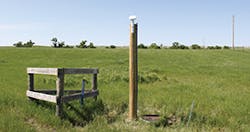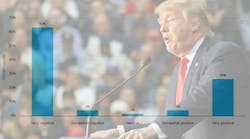Water utilities are struggling to just break even—this according to a new research paper by the consulting firm Black & Veatch. The report confirms what is hardly a secret to water industry insiders and consumers alike: aging infrastructure is creating financial worries and contributing to steeper water bills across the country.
The report, Black & Veatch’s third annual study focused on the US water industry, states that increasing challenges “are driving an increased focus on utility automation functions. They are also driving the addition of real-time monitoring and diagnostics capabilities to enable proactive asset management.”
This, combined with the difficulty in securing funding to replace aging infrastructure, has many utilities seeking out public-private partnerships to bring new and innovative water meter automation technology online.
The Even Higher Cost of Remote Water Meter Reading
Nobody knows the high cost of maintaining water infrastructure better than West River Lyman Jones Rural Water Systems (WR/LJ), a South Dakota co-op with a service area of over 8,000 square miles and only eight full-time employees. In early 2011, WR/LJ was living with the painful reality experienced by many rural water utilities—low customer density in a large service area.
Satellite messaging solution
As a result, the co-op was forced to adopt a self-read and self-bill meter system where customers were required to call and mail in their meter reading every month. “Members would go weeks without reading,” says Jake Fitzgerald, General Manager of WR/LJ. “We wouldn’t know of any discrepancies until we completed an annual meter audit where we would identify huge water losses on the customer side. The customer would go into bill shock seeing thousands of dollars for unpaid water usage and collecting on those bills caused heartburn for everyone.”
Smart Water Meter Automation and Data Analytics
In late 2011, WR/LJ began looking for an alternate automatic meter reading (AMR) solution that would allow them to obtain daily readings without relying on their customers. The solution would have to work uniformly across their entire customer base, regardless of the type of meter onsite, as well as work with the available communication infrastructure for relaying meter reading.
The co-op was also hoping that a new system would solve another ongoing problem. “We would notice high flows using our master meters,” recounts Fitzgerald. “But if we couldn’t find a leak on our line, we were out chasing meters, physically driving out to these remote locations, to see how many gallons per minute we were losing at every location. It was slow and expensive for us and for our members.”
The co-op, after much research and consideration, opted for the satellite water meter reading system offered by Informational Data Technologies (IDT). The IDT Harmony Water Management System is a solution that relies on SkyWave satellite messaging terminals to relay daily readings from remote meters without the need for fixed radio towers or clustered repeaters. The Web-based interface allows utility managers to closely analyze and monitor water consumption and receive alerts if unusually high consumption is detected. The system also allows the utility to bill customers for their consumption.
One Leak: 13 Gallons Per Minute
After the first installations, WR/LJ made some startling discoveries. “Within the first few months, the new satellite water meter reading system helped us detect over 30 leaks on the customers’ side of the meter,” says Fitzgerald. “That number of detected leaks surprised us because we were hoping to detect that many in a year.”
In all the cases, individual service meters “alarmed” and office or field staff were able to notify each user of the usage spike. The flows (leaks) that were detected have ranged from 4,000 up to 42,000 gallons per day. One leak involved a board member of the water co-op who was losing 13 gallons per minute.
“Not only were the customers very appreciative of these calls, narrowing our water loss to that level is something we could never do before. It is now part of our mornings to call customers whose meters have alarmed,” explains Fitzgerald. “Our customers are always happy when we call, and they know we’re saving them water when we call them. They love that.”
Satellite Water Meter Reading for Complete Visibility
Thinking back on his options, Fitzgerald recounts some of the considerations that he worked through with DGR Engineering—the firm he worked with before the co-op ultimately opted for a satellite meter reading system. “A lot of our customers’ meters are within river breaks, and so we knew that with a drive-by meter reading system we would have to drive a lot of miles to get close enough for a meter every month—the operating costs were too high,” says Fitzgerald.
According to DGR Engineering’s John Madden, fixed radio systems with towers and repeaters also did not meet the metering demand for WR/LJ. “In a cost-versus-benefits study, we found the infrastructure would cost millions of dollars for a system that would only read half of the meters,” explains Madden.
A Brighter Future
According to Fitzgerald, “The board and I are happy with the IDT solution. Most importantly, the membership is pleased with the system. If a system works in our service area with all the river breaks and badlands, it’s going to work anywhere.”
Besides continuing to upgrade their customer meters with satellite meter reading systems, WR/LJ is looking at IDT’s Harmony Valve system. This new feature allows utilities to remotely switch customers’ water off and on, or control other functions. “The Harmony Valve system has the potential for further reduction in our operating costs,” says Fitzgerald. “Keeping our costs down means keeping the water rates down for our customers.”




